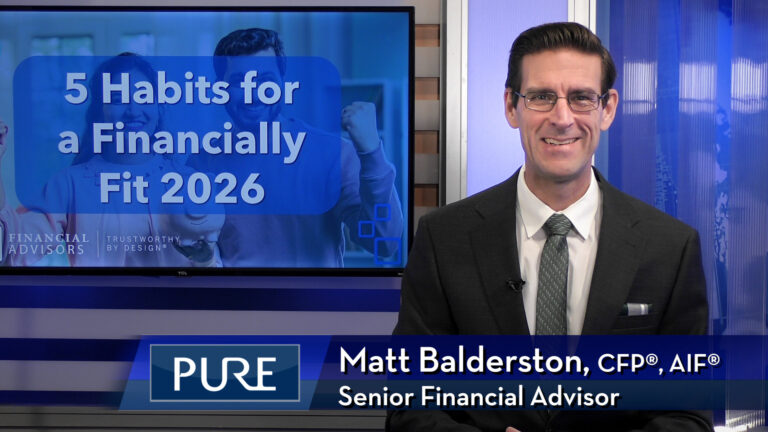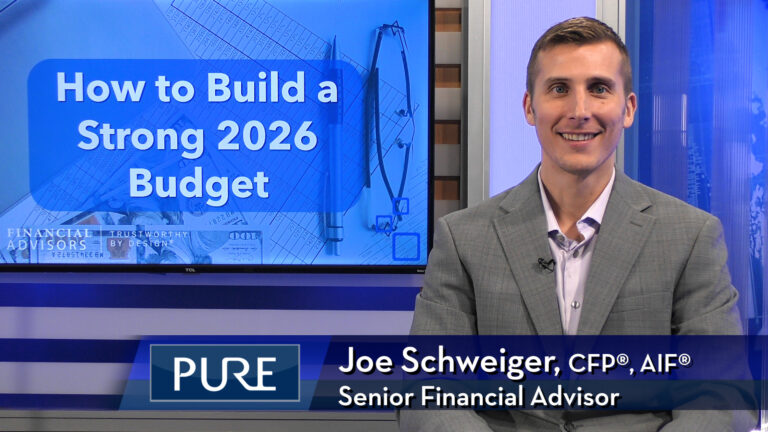Social Security is a benefit many people eagerly anticipate after retirement. However, safeguarding yourself against related scams is crucial. Pure’s Senior Financial Advisor, Matt Balderston, CFP®, AIF®, outlines common warning signs and the tactics scammers employ to help you protect your finances.
FREE GUIDE | Social Security Handbook
Transcript
Today we’re going to discuss Social Security scams – common signs to look out for, and more specific tactics scammers use. They’re not always after money, either. Impersonating the Social Security Administration can be a great way for them to get your Social Security Number and ultimately your identity.
Scammers can initiate contact through any form of communication: phone, email, text message, social media, etc. No matter what medium they use, their strategies are very similar. The biggest giveaway you may be in contact with a scammer is a sense of urgency. They’ll include some kind of benefit or penalty in their pitch, but the results occur only if you act, or don’t act, immediately. As an example of the penalty method, you might be told you have only 24 hours to return an excess payment, or your benefits will be suspended. The Social Security Administration will always give you time to resolve any issue, so don’t fall for this blatant attempt of trying to scare you.
Another sign is if you’re told you have to provide the payment in a specific and untraceable way, say as a gift card, cryptocurrency, wire transfer, or mailing cash.
If the contact is coming through electronic means – email, text, or social media – look for other clues like poor grammar and links that aren’t specifically www.ssa.gov. You can even hover over links and email addresses to see if they’re shortcuts to more suspicious addresses. And never click on a link unless you absolutely know you can trust it!
Scams are always evolving, so here are some specific scams out there today you should look out for.
First, impersonating Social Security employees and saying there’s a problem with your benefit. This would lead to asking you to confirm all sorts of personal information, which they are simply gathering to steal your identity.
Second, the overpayment scam. Telling you received a payment in error, and you need to return it before they can resume sending your correct benefit. You could be asked for personal information or simply asked for the cash to be sent by gift card or wire transfer.
Finally, there are even fake sites for replacing Social Security cards. They’ll offer to expedite the process for a fee, but getting a new card is free, and you can only do it directly through the Social Security Administration.
Your best defense against any of these scams is to cut off communication – hang up, mark the email address as junk, block the contact, etc. But if you ever think something might be for real, but want to be safe, you can always call the Social Security Administration directly to ask if they have any issues pending with your Social Security number.
To end on a positive note, if you’d like to see how legitimate Social Security benefits fit into your overall retirement plan, contact Pure for a free financial analysis.
Subscribe to our YouTube channel.
IMPORTANT DISCLOSURES:
• Investment Advisory and Financial Planning Services are offered through Pure Financial Advisors, LLC, a Registered Investment Advisor.
• Pure Financial Advisors LLC does not offer tax or legal advice. Consult with your tax advisor or attorney regarding specific situations.
• Opinions expressed are subject to change without notice and are not intended as investment advice or to predict future performance.
• Investing involves risk including the potential loss of principal. No investment strategy can guarantee a profit or protect against loss in periods of declining values.
• All information is believed to be from reliable sources; however, we make no representation as to its completeness or accuracy.
• Intended for educational purposes only and are not intended as individualized advice or a guarantee that you will achieve a desired result. Before implementing any strategies discussed you should consult your tax and financial advisors.
• Pure Financial Advisors, LLC, is not affiliated with any government agency, including, but not limited to the Social Security Administration.
CFP® – The CERTIFIED FINANCIAL PLANNER™ certification is by the Certified Financial Planner Board of Standards, Inc. To attain the right to use the CFP® designation, an individual must satisfactorily fulfill education, experience and ethics requirements as well as pass a comprehensive exam. Thirty hours of continuing education is required every two years to maintain the designation.
AIF® – Accredited Investment Fiduciary designation is administered by the Center for Fiduciary Studies fi360. To receive the AIF Designation, an individual must meet prerequisite criteria, complete a training program, and pass a comprehensive examination. Six hours of continuing education is required annually to maintain the designation.











